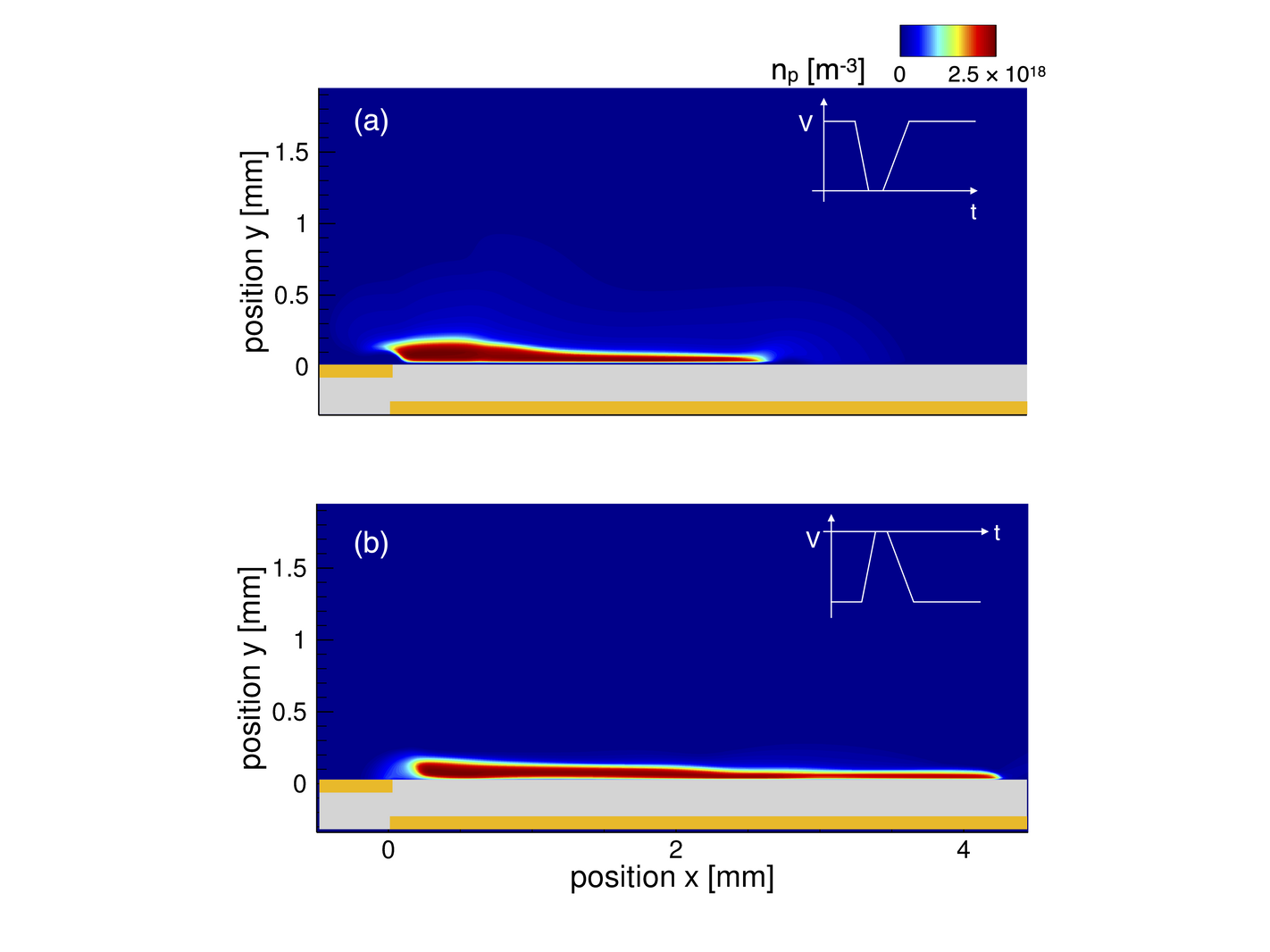Discharge-flow coupling simulation of nanosecond-pulse-driven plasma actuator
JAXA Supercomputer System Annual Report April 2019-March 2020
Report Number: R19EACA16
Subject Category: JSS2 Inter-University Research
- Responsible Representative: Naofumi Ohnishi, Professor, Tohoku University
- Contact Information: Naofumi Ohnishi(ohnishi@rhd.mech.tohoku.ac.jp)
- Members: Naofumi Ohnishi, Shintaro Sato
Abstract
Dielectric-barrier-discharge (DBD) plasma actuator is a promising device as an active flow control. The purpose of this project is to clarify mechanism of separation control around an airfoil by using nanosecond-pulsed-driven plasma actuator.
Reference URL
Please refer to ‘大西研究室 / 高橋研究室‘.
Reasons and benefits of using JAXA Supercomputer System
The use of the super computer is necessary to conduct simulation of flow field with the discharge simulation because the Poisson’s equation for electric potential, which requires high computational cost, is solved every time step. The difference of the time scale between the discharge and flow also increases the computational cost.
Achievements of the Year
We conducted a discharge simulation of nanosecond-pulse-drive plasma actuator toward the low-voltage operation. Two types of applied voltage waveforms were applied to the plasma actuator in this study: positively-DC-biased negative pulse and negatively-DC-biased positive pulse. The discharge structure, charge profile of the dielectric surface and produced electrohydrodynamic force depends on the voltage waveform (Fig. 1). We will conduct a discharge-flow coupling simulation by using the database obtained from the discharge simulation to clarify the flow control mechanism of plasma actuators as future work.

Fig.1: Spatial distribution of number density of positive ion when (a) positively-DC-biased negative pulse and (b) negatively-DC-biased positive pulse are applied.
Publications
– Peer-reviewed papers
1. S. Sato, H. Furukawa, A. Komuro, M. Takahashi, and N. Ohnishi, “Successively accelerated ionic wind with integrated dielectric-barrier-discharge plasma actuator for low-voltage operation”, Sicentific Reports 9, 5813 (2019).
2. S. Sato, H. Furukawa, M. Takahashi, and N. Ohnishi, “Computational study of discharge process in plasma actuator for enhanced electrohydrodynamic force generation toward low-voltage operation”, Transactions of the Japan Society for Aeronautical and Space Sicences, Aerospace Technology Japan, accepted.
– Oral Presentations
1. S. Sato, H. Furukawa, M. Takahashi, and N. Ohnishi, “Proposal of a plasma actuator for enhanced electrohydrodynamic force generation toward low-voltage operation”, 32nd International Symposium on Space Technology and Science & 9th Nano-Satellite Symposium, Fukui, June 15-21, 2019.
2. S. Sato, H. Furukawa, A. Komuro, M. Takahashi, and N. Ohnishi, “A study of integrated plasma actuator toward low-voltage operation”, Akita, September 2019.
Usage of JSS2
Computational Information
- Process Parallelization Methods: MPI
- Thread Parallelization Methods: N/A
- Number of Processes: 2 – 960
- Elapsed Time per Case: 72 Hour(s)
Resources Used
Fraction of Usage in Total Resources*1(%): 0.07
Details
Please refer to System Configuration of JSS2 for the system configuration and major specifications of JSS2.
| System Name | Amount of Core Time(core x hours) | Fraction of Usage*2(%) |
|---|---|---|
| SORA-MA | 572,105.65 | 0.07 |
| SORA-PP | 0.00 | 0.00 |
| SORA-LM | 0.00 | 0.00 |
| SORA-TPP | 0.00 | 0.00 |
| File System Name | Storage Assigned(GiB) | Fraction of Usage*2(%) |
|---|---|---|
| /home | 195.50 | 0.16 |
| /data | 9,813.31 | 0.17 |
| /ltmp | 2,929.69 | 0.25 |
| Archiver Name | Storage Used(TiB) | Fraction of Usage*2(%) |
|---|---|---|
| J-SPACE | 6.46 | 0.16 |
*1: Fraction of Usage in Total Resources: Weighted average of three resource types (Computing, File System, and Archiver).
*2: Fraction of Usage:Percentage of usage relative to each resource used in one year.
JAXA Supercomputer System Annual Report April 2019-March 2020


